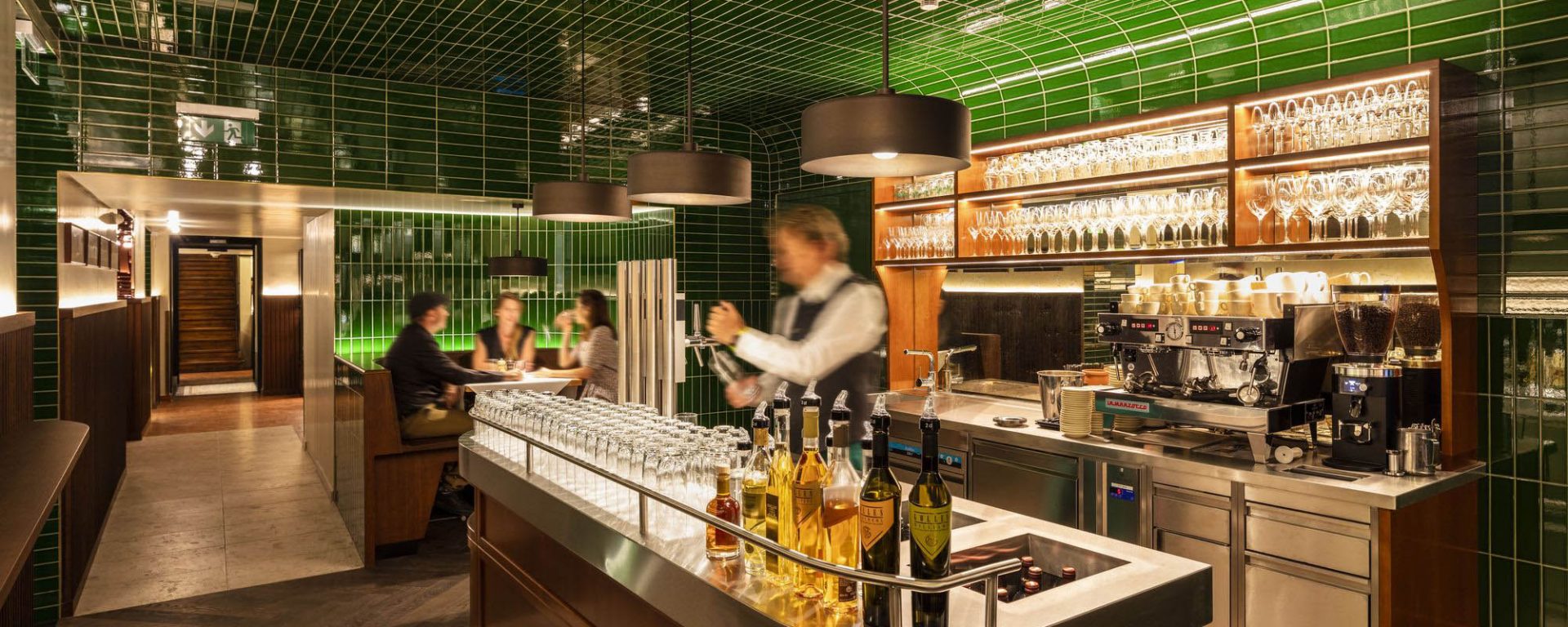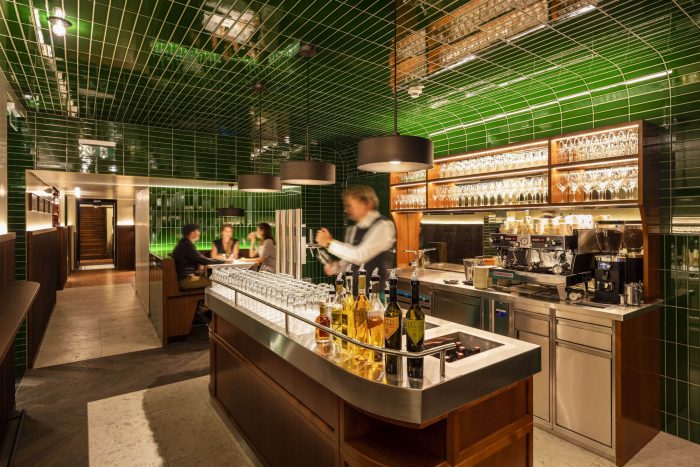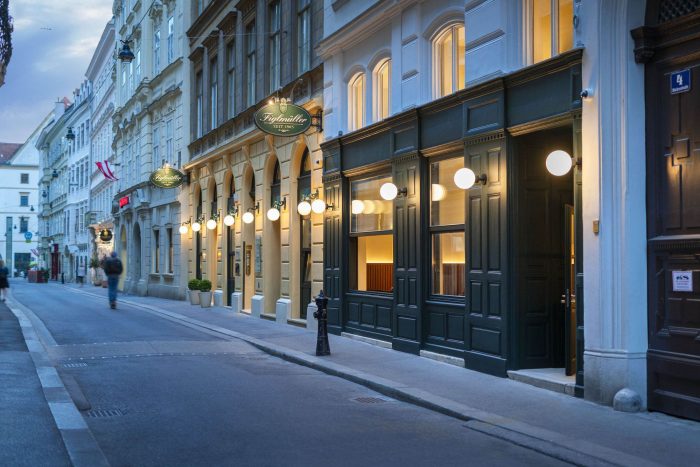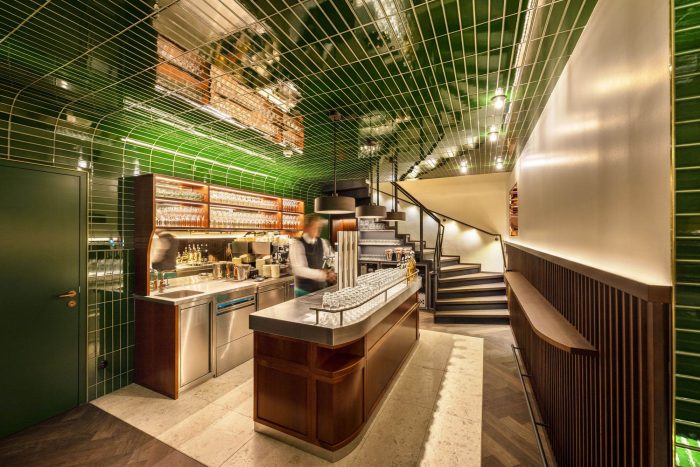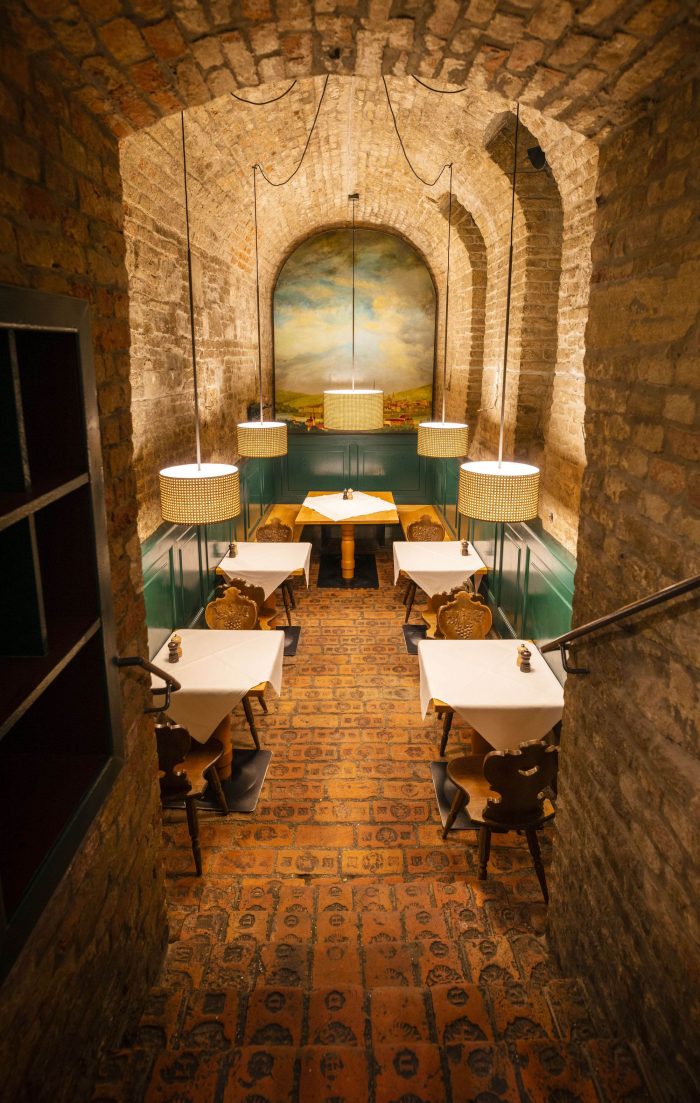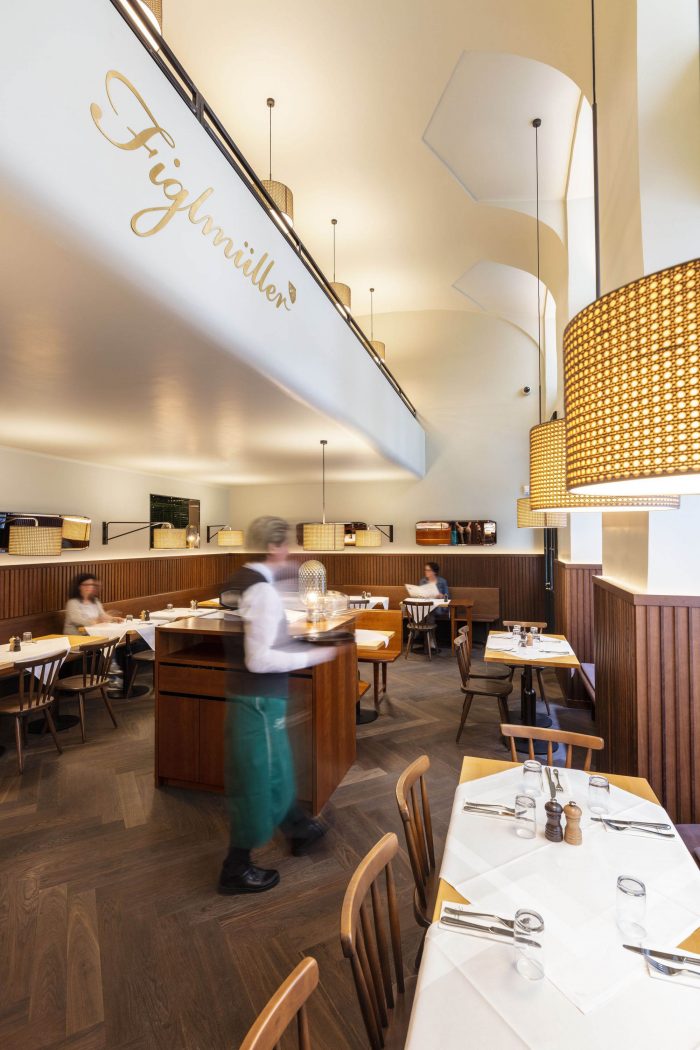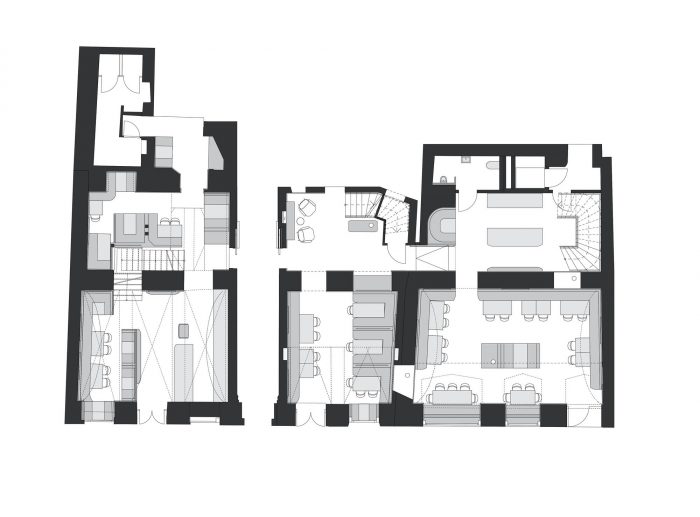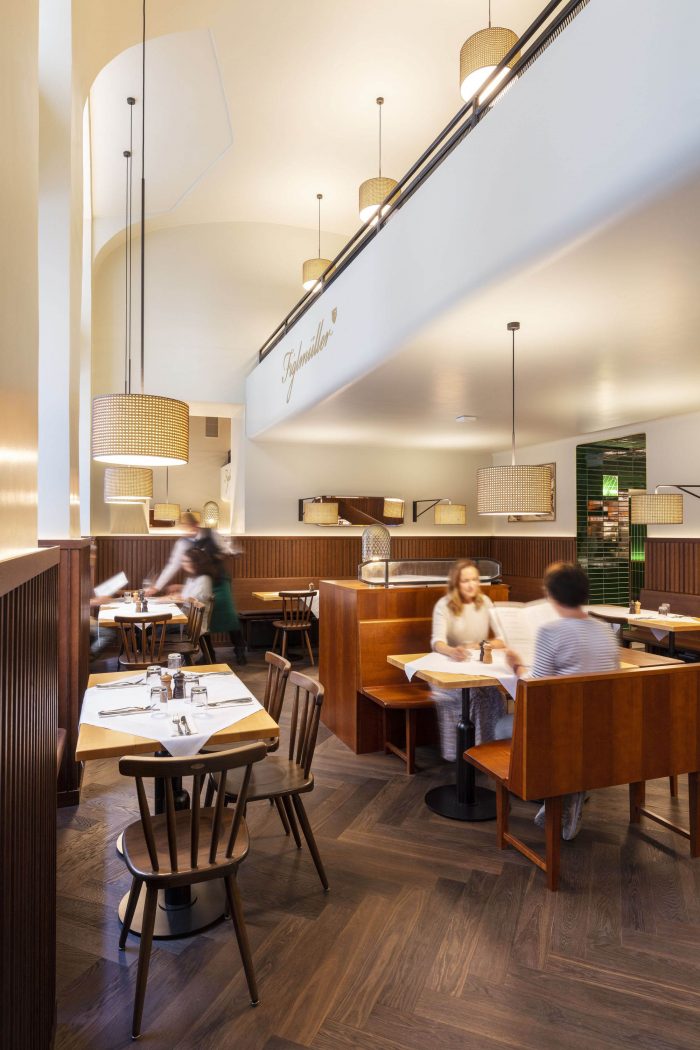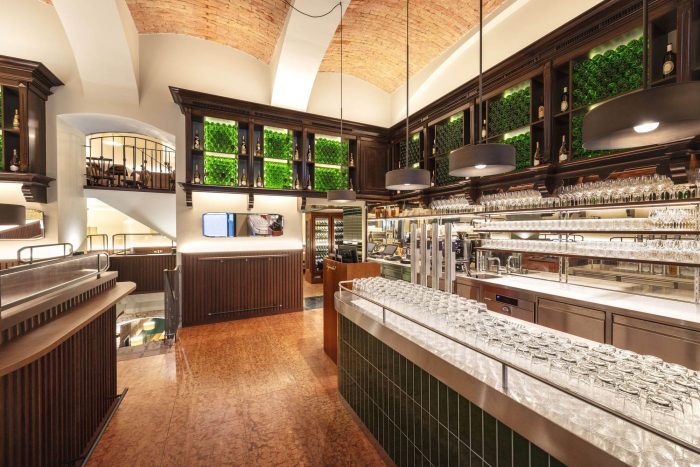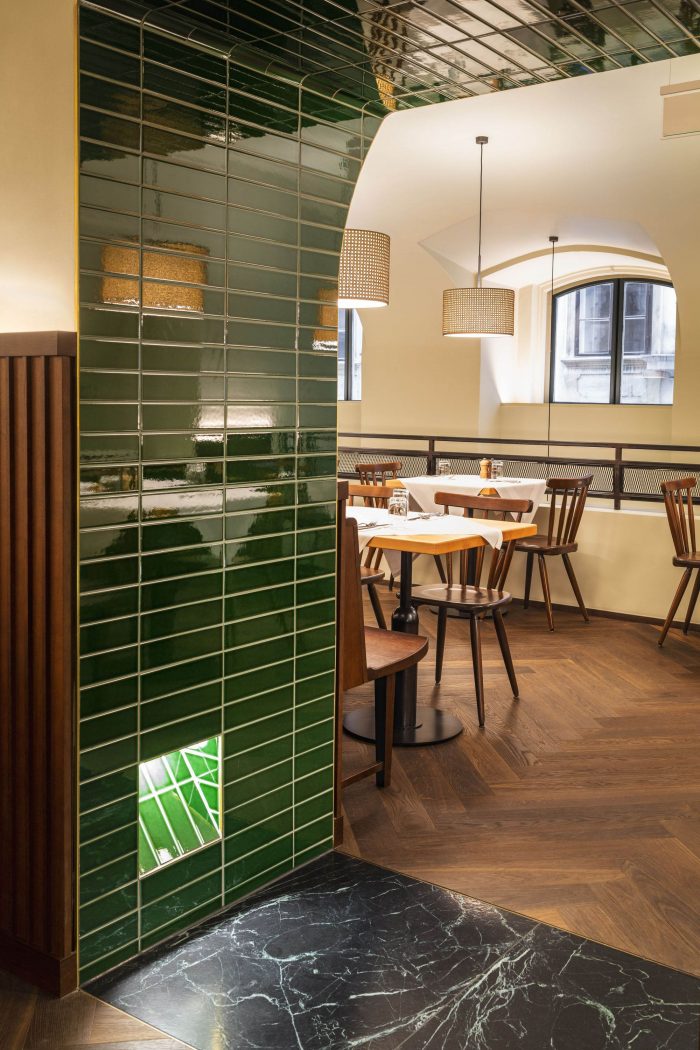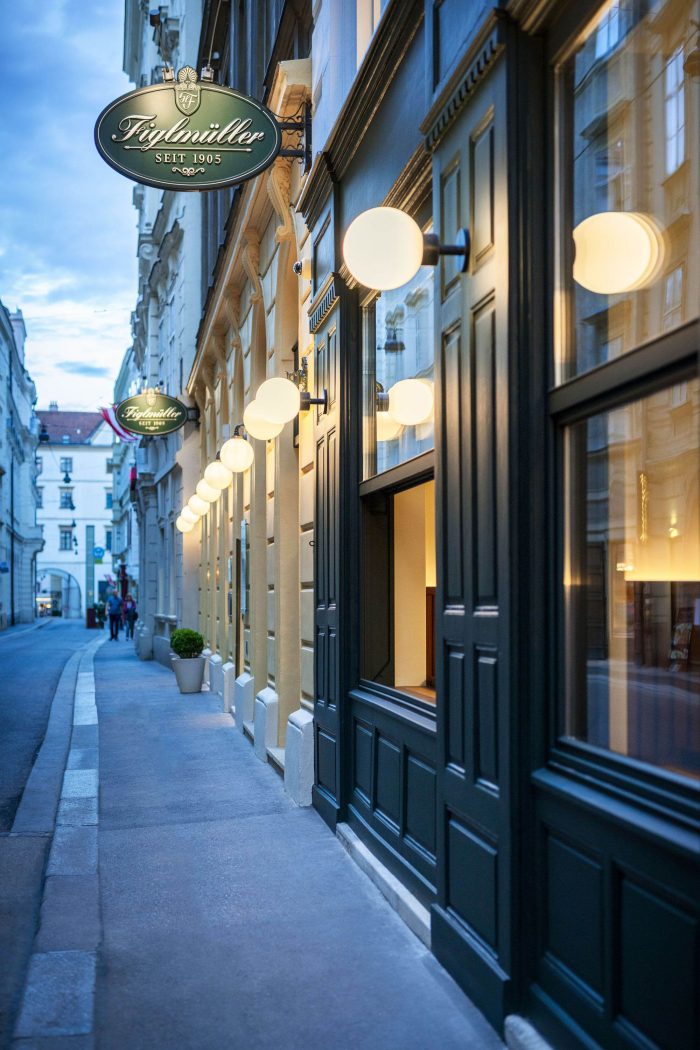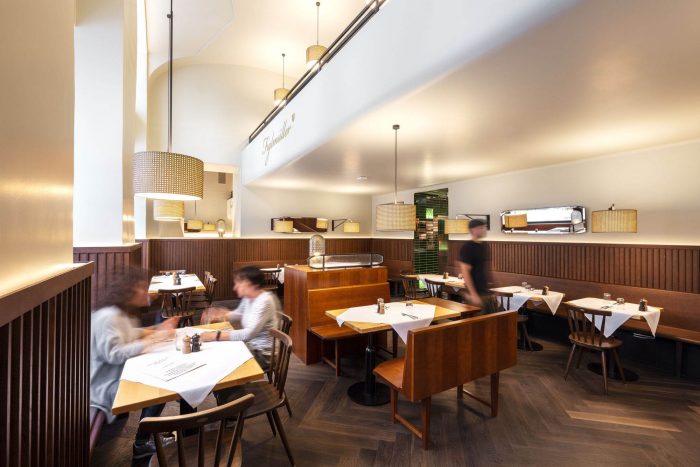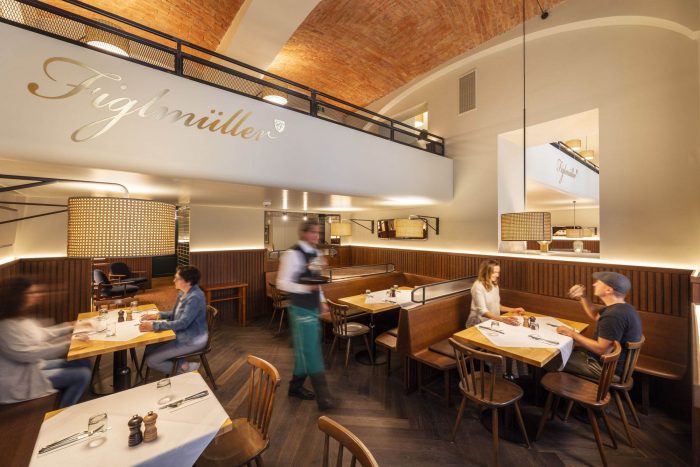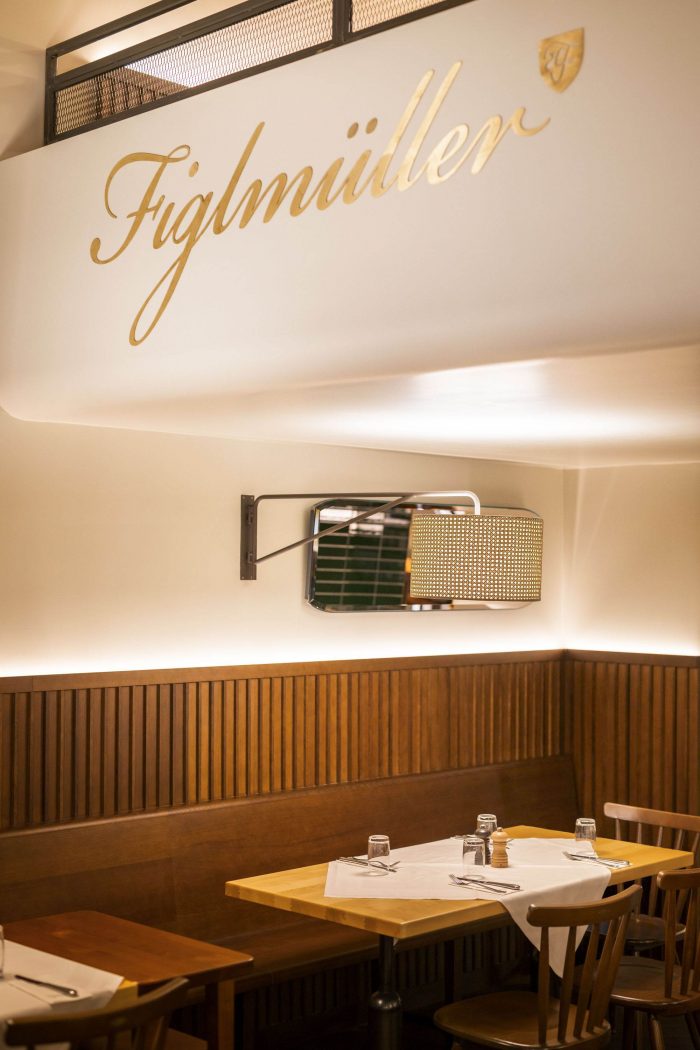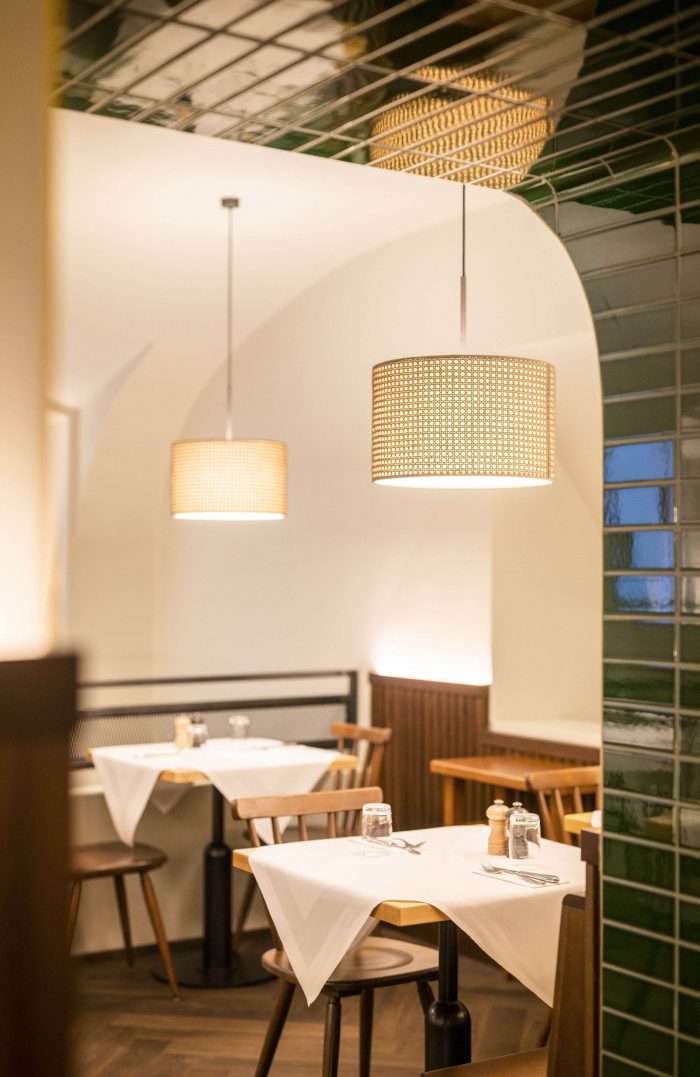BWM Architekten回顾了一长串成功的酒店项目,其中许多是为奥地利的知名品牌服务的,如圣史蒂芬广场上的标志性糖果店Manner,以及世界著名的萨切尔酒店中的萨切尔艾克和萨切尔沙龙。现在,BWM还翻新了位于Bäckerstrasse的广受欢迎的Figlmüller餐厅,并将其扩展到邻近建筑物的整个底层。Figlmüller餐厅是游客和当地人品尝原汁原味的维也纳美食的第一站,它既继承了传统又与时俱进。它的Wiener Schnitzel(维也纳炸鸡)闻名于世。
BWM Architekten looks back on a long list of successful hospitality projects, many of which were for renowned Austrian brands, such as the iconic confectioner Manner, on St. Stephen’s Square, and the Sacher Eck and Salon Sacher, both in the world-famous Hotel Sacher. Now BWM has also refurbished the popular Figlmüller Restaurant in Bäckerstrasse and extended it to include the entire ground floor of the adjacent building. Figlmüller is the first point of call for both tourists and locals when it comes to original Viennese cuisine that is steeped in tradition while keeping with the times. It is famous the world over for its Wiener Schnitzel.
餐厅的外观反映了这种传统与创新、旧与新之间的相互作用。它被扩展到包括邻近建筑的整个底层,从而使其总建筑面积达到450平方米,可容纳250名客人。BWM通过破墙将餐厅的新部分和原有部分连接起来。开口处的侧墙是倾斜的;这引导了人们的视线,并创造了一种错觉,即它们是墙上的图片,可以瞥见邻近的房间。BWM Architekten重新诠释了经典的维也纳餐厅材料,如木材和瓷砖,并将其与现代元素完美结合,创造出既熟悉又令人耳目一新的现代氛围。
The restaurant’s appearance reflects this interplay between tradition and innovation, between the old and the new. It was extended to include the entire ground floor of the neighbouring building, thereby bringing its total floor area to 450m2 with seating for 250 guests. BWM connected the new and original parts of the restaurant by breaking through the walls. The openings have sloping sidewalls; this directs the eye and creates the illusion that they are pictures on the wall that give glimpses into the adjacent room. BWM Architekten reinterpreted classic Viennese restaurant materials like wood and tiles and congenially combined them with modern elements to create a both familiar and refreshingly contemporary atmosphere.
“我们的目标是保留Figlmüller超过100年历史的精髓,同时将其嵌入现代环境中,”BWM建筑师Erich Bernard解释说。例如,传统维也纳酒馆中典型的木质壁板被保留下来,并作为一个传统元素。然而,其完全重新设计的轮廓,使它看起来很新鲜和新颖。
“Our goal was to preserve the quintessence of Figlmüller’s more than 100-year-old concept, but also embed it in a modern setting,” explains BWM architect Erich Bernard. By way of example, the wooden wainscot paneling, which is so typical of traditional Viennese taverns, was preserved and featured as a traditional element. Its completely redesigned profile, however, makes it look fresh and new.
特别设计的带铜柄的灯具和覆盖着彩色维也纳柳条的灯罩强化了这一概念。原有酒吧区的现有石板地面辅以红色阿德内特大理石,而新酒吧则用温暖的樱桃木包覆。新房间的地板上铺着涂油的人字形镶木地板,来自的里雅斯特的深绿色奥里西纳大理石提供了点缀。瓷砖是维也纳餐厅的一个典型元素,它的特点不止于此。
Specially designed lamps with brass stems and lampshades covered with stained Viennese wickerwork reinforce the concept. The existing stone floor in the original bar area is supplemented with Red Adnet marble, whereas the new bar is clad with warm cherrywood. The floor in the new rooms is covered with oiled herringbone parquet, and dark green Aurisina marble from Trieste provides accents. The tile, an element that is typical of Viennese restaurants, is featured in more than one way.
深绿色的瓷砖覆盖了新酒吧后面的墙壁和上面的天花板。它们还被用于新旧两部分之间的通道,而门槛则是由Verde Assoluto天然石材制成。座位是典型的酒馆风格,由质朴的、复古的椅子组成,这些椅子都经过了新的染色和清漆处理。
Dark green tiles cover the wall behind the new bar and the ceiling above it. They are also used for the passageways between the old and new sections, while the thresholds are made from Verde Assoluto natural stone. The seating, in a style typical of taverns, consists of rustic, vintage chairs that have been freshly stained and varnished.
Architects: BWM Architekten
Area: 450 m²
Year: 2020
Photographs: BWM Architekten / Severin Wurnig
Manufacturers: 2F Leuchten GesmH, Christian Ploderer, Lohberger Küchen Competence Center GmbH, Tischlerei Huber
Lead Architects: Erich Bernard, Ingrid Schmid, Kristina Tomaselli, Elisabeth Morillo-Napetschnig, Kinga Baluch
Clients:Figlmüller GmbH
Collaborators:2F Leuchten GesmH, Lohberger Küchen Competence Center GmbH, Tischlerei Huber, Christian Ploderer
City:Wien
Country:Austria

